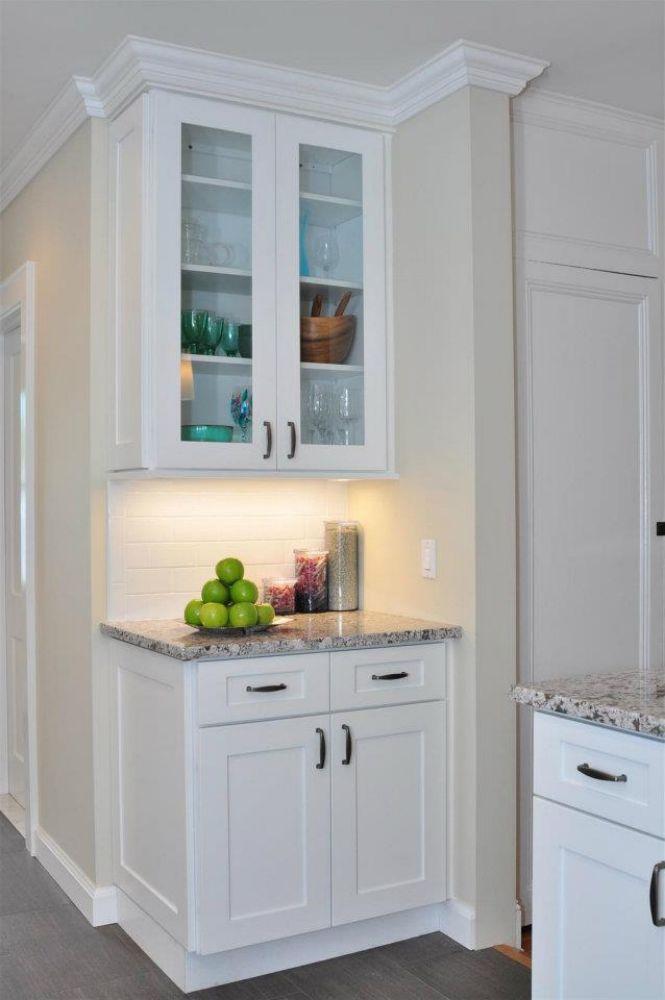Understanding the Connection Between Custom Cabinet Materials and Your Health
When it comes to creating a safe and stylish home, most homeowners focus on design, color, and layout. However, one crucial factor that directly impacts your well-being is the type of materials used in your cabinetry. Cabinets cover significant portions of kitchens, bathrooms, and laundry rooms, and their materials can influence the air you breathe every day.
The relationship between custom cabinet materials and your health goes far beyond aesthetics. The adhesives, finishes, and composite woods used in cabinetry construction can release volatile organic compounds (VOCs) and other harmful chemicals that degrade indoor air quality. That’s why it’s essential to select certified, low-emission materials that prioritize both durability and health. If you’re exploring healthier cabinetry options, you can learn more at Custom cabinet materials and your health.
Why Material Choice Matters for a Healthy Home
Cabinets are long-term fixtures that have a lasting impact on your indoor environment. Over time, inferior materials can release toxic substances that contribute to indoor pollution. Because most people spend a majority of their time indoors, especially at home, the air quality within your living space directly affects your health.
Traditional cabinet materials—like particleboard, MDF (medium-density fiberboard), or plywood bonded with urea-formaldehyde—are some of the main sources of chemical emissions in residential spaces. These materials can continuously off-gas VOCs, leading to respiratory irritation, allergies, or even chronic health conditions.
By selecting healthier alternatives such as low-VOC finishes, formaldehyde-free plywood, or solid wood, homeowners can create cleaner air and a safer home environment.
Common Health Risks from Conventional Cabinet Materials
Many traditional cabinets are built for affordability and aesthetics but not necessarily for health or sustainability. Unfortunately, the adhesives and finishes used in such products often release chemicals that accumulate in indoor air. Common health risks include:
-
Respiratory problems – VOCs such as formaldehyde and toluene can cause coughing, wheezing, or aggravate asthma.
-
Allergic reactions – Chemical exposure can trigger headaches, dizziness, or skin irritation.
-
Long-term effects – Continuous exposure to formaldehyde and similar toxins has been linked to certain cancers and nervous system disorders.
The hidden cost of traditional cabinetry lies in these unseen health effects, which can be prevented by choosing safer, non-toxic materials.
The Benefits of Low-VOC and Formaldehyde-Free Materials
Low-VOC and formaldehyde-free materials are designed to limit the release of harmful gases into your home. Low-VOC finishes use water-based or natural components instead of harsh chemical solvents. Similarly, formaldehyde-free wood products rely on bio-based or soy adhesives that bond materials without emitting toxic fumes.
These options not only protect your health but also improve comfort by eliminating strong chemical odors commonly associated with new cabinetry installations. The reduced exposure to airborne toxins ensures a cleaner, fresher indoor atmosphere that supports overall wellness.
Solid Wood: The Natural and Healthiest Cabinet Option
Solid wood cabinetry remains one of the healthiest material choices available. Unlike engineered woods, it does not rely on synthetic adhesives or resins that release VOCs. Its natural composition provides durability, timeless appeal, and minimal environmental impact.
Hardwoods such as maple, oak, and birch are excellent options for custom cabinetry. When combined with water-based or natural finishes, solid wood cabinets contribute to superior indoor air quality. Additionally, they’re biodegradable and renewable, making them an environmentally responsible choice.
Bamboo and Eco-Friendly Materials for Better Health
Bamboo has emerged as a sustainable, health-conscious option for custom cabinets. Technically a grass, bamboo grows rapidly and regenerates without replanting, making it an ideal renewable resource. When processed using low-VOC adhesives and finishes, bamboo cabinetry becomes both eco-friendly and non-toxic.
Bamboo’s natural resistance to moisture and mold further enhances its value for humid environments like kitchens and bathrooms. For homeowners looking for modern designs that prioritize wellness, bamboo offers a perfect blend of beauty, strength, and environmental responsibility.
Safer Engineered Woods for Modern Cabinetry
While solid wood is ideal, engineered materials like plywood or MDF are often necessary for cost or design flexibility. Fortunately, manufacturers have made significant strides toward creating healthier versions of these materials.
Low-emission plywood uses soy-based resins instead of formaldehyde adhesives, while CARB Phase 2-compliant MDF meets strict emission standards. These engineered woods provide a safer alternative to conventional products without compromising structural integrity or design versatility.
By selecting certified engineered materials, you can enjoy all the benefits of modern cabinetry while maintaining a healthier home.
The Role of Adhesives in Air Quality and Health
Adhesives are one of the primary sources of chemical emissions in cabinetry. Many conventional glues contain urea-formaldehyde or phenol-formaldehyde, both known to release VOCs over time.
To reduce these emissions, opt for cabinets built with water-based or bio-based adhesives. These non-toxic glues provide strong bonds without compromising air quality. When combined with low-VOC finishes, they help create a more holistic approach to healthy home design.
Finishes and Sealants That Promote Healthier Interiors
Finishes and sealants protect cabinetry surfaces, but traditional solvent-based coatings are often high in VOCs. These chemicals can continue releasing toxic fumes for years after installation, particularly in warm or humid environments.
Healthier alternatives include:
-
Water-based finishes – These provide strong protection with minimal odor or emissions.
-
UV-cured coatings – Cured instantly under ultraviolet light, these coatings emit almost no VOCs.
-
Natural oils and waxes – Ideal for solid wood cabinetry, these provide a soft, eco-friendly finish.
By choosing these options, homeowners can enjoy durable, long-lasting cabinetry that doesn’t compromise air quality.
The Impact of Off-Gassing on Indoor Air Quality
Off-gassing refers to the release of VOCs and other airborne chemicals from cabinet materials over time. Traditional cabinets can off-gas for months—or even years—after installation, leading to persistent indoor pollution.
The process is especially concerning in enclosed areas like kitchens and bathrooms, where poor ventilation traps these emissions. Custom cabinets built with low-emission materials dramatically reduce off-gassing, helping maintain fresher, healthier air throughout the home.
Greenguard Gold-certified cabinets are specifically tested to minimize off-gassing, making them one of the safest options available.
The Importance of Certifications for Safe Cabinetry
Certifications provide assurance that the materials and finishes used in cabinetry meet rigorous health and safety standards. When choosing custom cabinets, look for these key certifications:
-
Greenguard Gold Certification: Ensures products emit very low levels of VOCs and are safe for sensitive environments like schools and homes.
-
CARB Phase 2 Compliance: Limits formaldehyde emissions from composite wood products.
-
EPA TSCA Title VI Certification: Aligns national safety standards with low-emission manufacturing.
Cabinets bearing these labels guarantee that your investment supports both your health and the environment.
Moisture-Resistant Materials to Prevent Mold and Allergens
Cabinets that resist moisture play a vital role in maintaining indoor air quality. Excess humidity can lead to mold and mildew growth—two major contributors to allergies and respiratory discomfort.
Materials such as moisture-resistant plywood, bamboo, and properly sealed hardwoods provide long-term defense against mold. Pairing them with well-ventilated designs ensures that your cabinets remain clean, dry, and allergen-free.
How Custom Cabinet Materials Affect Allergy Sufferers
For individuals with allergies or chemical sensitivities, traditional cabinetry can be problematic. VOC emissions and dust accumulation can trigger reactions that affect comfort and overall health.
Low-emission custom cabinetry minimizes these triggers. Smooth, sealed surfaces make cleaning easier, while non-toxic finishes reduce airborne irritants. By choosing materials designed for air quality and hygiene, you create a safe haven for allergy-prone family members.
Sustainability and Health: A Shared Goal
Sustainable cabinetry and healthy cabinetry often go hand in hand. Environmentally responsible materials are typically safer for human use, as they minimize chemicals and prioritize renewable sources.
Manufacturers that produce eco-friendly cabinetry often follow ethical sourcing, energy-efficient manufacturing, and waste-reduction practices. By investing in sustainable materials, homeowners contribute to a cleaner planet while creating a toxin-free home.
Maintenance and Cleaning Tips for Health-Friendly Cabinets
Healthy cabinets require minimal maintenance and are easier to keep clean. To protect both your cabinets and your air quality:
-
Use mild, natural cleaners instead of harsh chemicals.
-
Avoid aerosol sprays and synthetic polishes.
-
Regularly wipe surfaces with a damp microfiber cloth to remove dust and allergens.
-
Keep humidity levels low to prevent mold growth.
These small steps extend your cabinetry’s lifespan while maintaining a healthier indoor environment.
Long-Term Health Benefits of Non-Toxic Cabinetry
Choosing non-toxic custom cabinets isn’t just a design decision—it’s a long-term investment in your family’s well-being. Clean air, fewer chemical irritants, and reduced exposure to toxins all contribute to a healthier lifestyle.
Homeowners who opt for low-VOC or Greenguard Gold-certified materials often report fewer respiratory problems, less fatigue, and improved comfort. Over time, the benefits of these health-conscious choices far outweigh the convenience of cheaper, chemically treated alternatives.
Manufacturers Leading the Way in Healthy Cabinet Design
Modern manufacturers are responding to the demand for health-centered cabinetry by adopting safer, sustainable production methods. This includes using recycled materials, implementing water-based technologies, and adhering to green certification programs.
These innovations demonstrate that luxury and health can coexist—offering homeowners stylish cabinetry that aligns with both aesthetic and wellness goals. As awareness continues to grow, these standards are quickly becoming the new norm in home design.
Creating a Healthier Home with Conscious Material Choices
Your home should be a sanctuary of comfort and safety, and that starts with the materials that make up its foundation. Choosing custom cabinets built with non-toxic, certified materials ensures your family breathes cleaner air every day.
From solid wood to bamboo and formaldehyde-free composites, the options for healthy cabinetry are more accessible than ever. By making informed material choices, you’re creating a home that supports wellness, sustainability, and peace of mind.
Conclusion
The relationship between custom cabinet materials and your health cannot be overstated. Cabinets made with low-emission materials, water-based finishes, and safe adhesives provide a cleaner, safer, and more comfortable home environment.
By choosing Greenguard Gold-certified or eco-friendly cabinetry options, you’re making an investment that supports both your family’s well-being and the planet’s future. Beautiful design and healthy living are no longer separate goals—they coexist in every thoughtful choice you make for your home.

